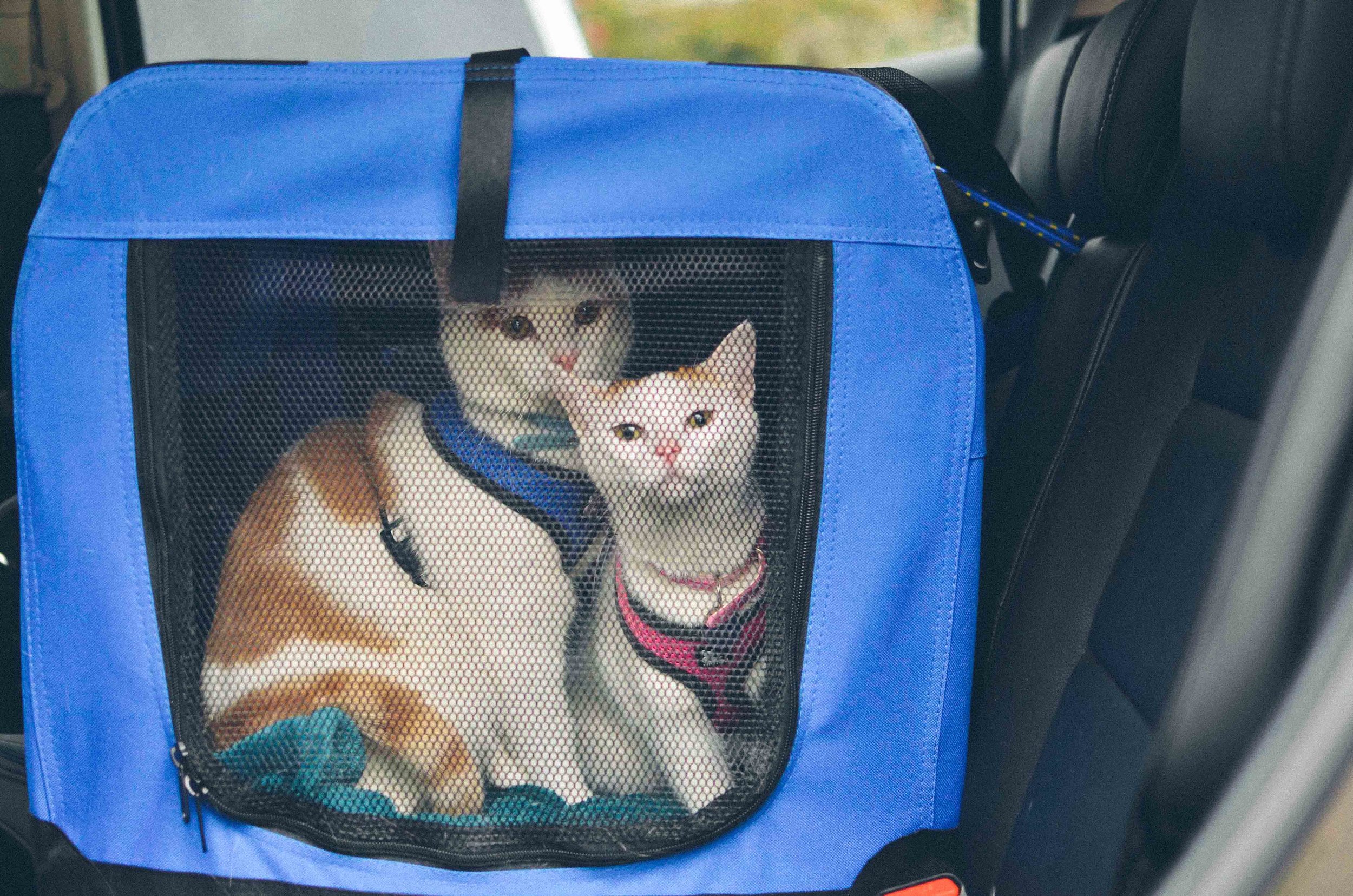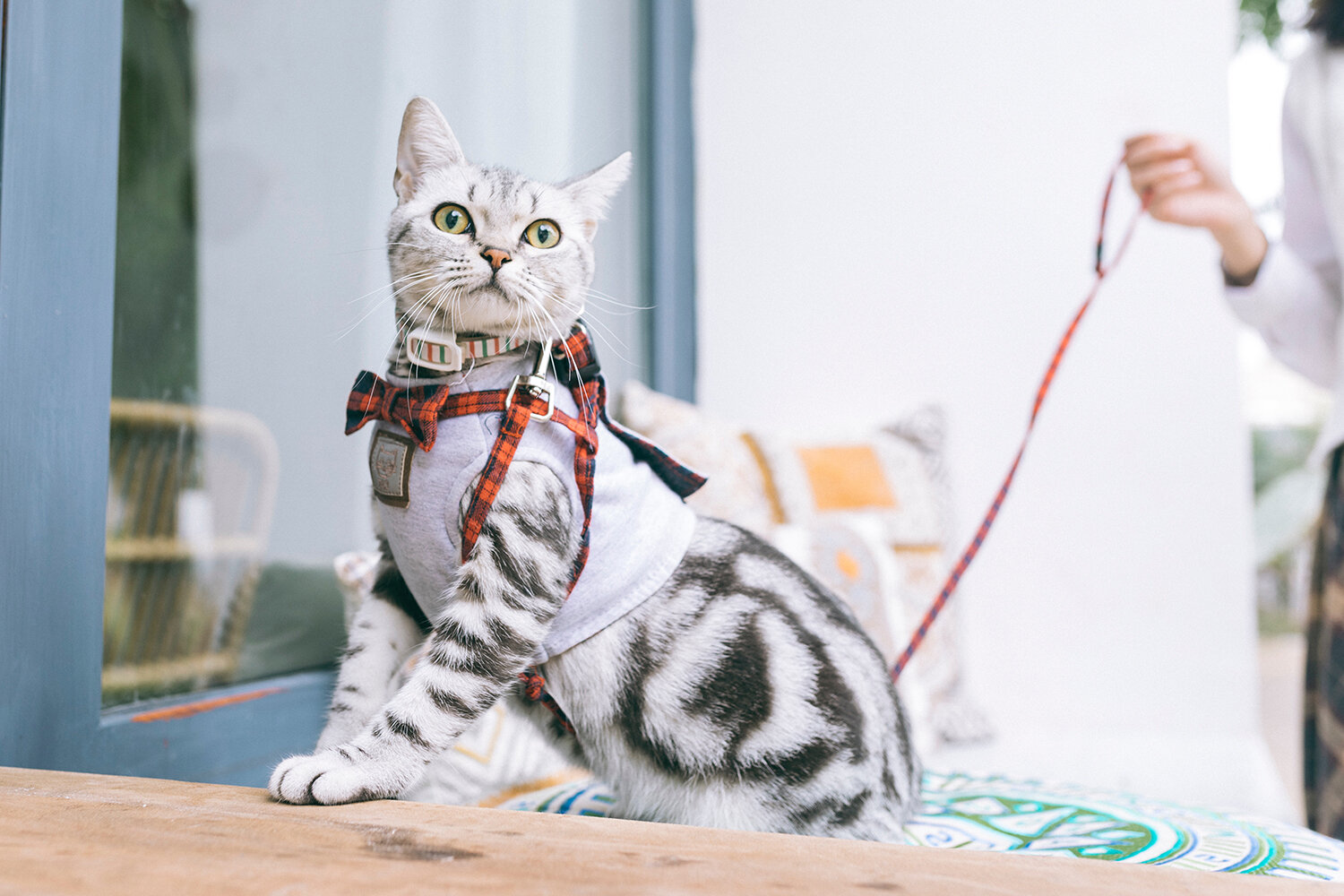How to Travel With A Cat In The Car
There is this belief, that cats hate riding in cars. A cat in a car brings images of howling, airplane ears, motion sickness and anxiety for everyone involved.
However, a cat who explores the world with their humans typically needs to travel in a car. It is the mode of transport where we take our cats to adventures.
Most cats who hate the car, don’t travel in it often. Their car rides may be limited to the scary visit to the vet or to the cattery, where they feel ‘abandoned’ by their owners – all of which associate car rides with not so happy times. No wonder they hate it!
There are ways to help your kitty enjoy car rides, or tolerate them so that you can take them to the locations that they want to go exploring in.
How to take your cat in the car
We recommend that your cat is restrained in the car, either in a carrier or by wearing a seatbelt harness. This helps ensure that your cat is not a projectile in the event of a car accident.
A cat carrier
There are several types of cat carriers that you can use to take your cat in the car. The carrier you used should depend on your cat, car and the amount of driving you plan to do. Your carrier should also be restrained in your car.
If you are just doing a short drive, a cat backpack may suffice.
However, for a 12 hour drive, we recommend a carrier that your cat can stand up in, comfortably stretch out in and turn around in. Perhaps you can use a dog kennel, a cloth carrier, or even a metal crate.
There are some great pet carriers that have been crash tested including the Sleepypod Mobile Pet Bed.
A seatbelt harness
For cats who do not enjoy traveling in a carrier, a seatbelt harness may be a great option. This means that your cat is secured in the car using a seat belt harness or their harness is connects to the seat belt.
Help your cat to love car rides
Start training early
As with anything, it is easier to train your cat when they are young, especially as a kitten.
As soon as your kitten joins your family, start taking them in the cat. You can take them with you on errands or other short trips. Consistent trips will help them get used to them cat
If your cat is no longer a kitten, don’t fret. You can still train them to like the car.
Teach your cat to love their carrier
Many cats associate their carrier with negative experiences, like visits to the vet or being dropped off at a cattery.
However, as the carrier is how your cat travels in the car, it would be ideal for your kitty to have a positive associate with it.
The aim is to teach your cat to enjoy spending time in their crate, this will encourage them to enter the crate willingly (no more forcing) and to see their cat crate as their safe space.
Start by feeding your cat near the crate. Then drop some treats into the carrier to make them comfortable with it. As they start entering the carrier on their own start giving them treats every time they are in the crate. If you have clicker trained your cat – you can use the same principles here.
Make the crate homely with blankets, and toys. Once your cat is comfortable with getting in on their own, provide them with a treat or toy and close the door, starting with short periods of time and slowly extending.
When your cat is used to being in their carrier, start carrying them around in the carrier. This will help them get used to the motion of being moved.
Teach your cat to love their seat-belt harness
If you are using a seat-belt harness to train your cat, harness train them with their new seat-belt harness. This will help them feel comfortable with the harness. Follow the steps outlined here to harness train them.
Start with short car rides
Once you are ready to travel with your cat in the car, start with short trips. This can be around your block and slowly increase the length of time as your cat becomes comfortable.
If your cat is slipping around in their carrier, you can use a non-slip bath mat. This may also help with motion sickness.
Ride often
For cats, consistency is an important part of training as it helps reinforce what your cat is learning about the car.
If you only take your cat in the car, every so often they may struggle to be comfortable with travelling in the car.
To make it easier for you and your cat, try to take them in the car as often as possible. An easy way to do this is to take them on errands with you.
Preparing for car travel with your cat
Preparing your cat
Ideally, you do not want your cat to be very hyperactive while you’re travelling in the car (who wants a mid drive zoomsies?!).
One way to avoid the zoomsies while you’re on the highway is to play with your cat before you get in the car. This will help tire them out and encourage them to sleep during the drive. Many kitties are tired after an adventure so are likely to sleep on the way home.
In order to avoid motion sickness, we suggest that you do not feed your cat just before departure. If your cat suffers from motion sickness, speak to your vet as they may have suggestions with medication.
If you are nervous about taking your cat in the car, particularly for longer drives, your veterinarian can also help with calming tablets or a pheromone spray like Feliway. Another option is to use a thundershirt.
Preparing your car
To help keep your cat calm in the car, replicate the feeling of home. Set up your cat’s favourite blankets, pillows and toys. If there is enough space, set up their favourite bed.
If you are going on a long trip, you can even set up a mobile litter box.
In hot weather, window sun shields help keep your kitty cool.
Once you’re on the road
Like people, it might take your cat some time to settle in once you start driving. They may be rather vocal for the first few minutes. This may even be due to their excitement about going exploring!
Keep your cat comfortable
Air conditioning and heating can help keep your cat comfortable.
Music for cats is a great way to help calm your cat if they are feeling nervous.
It is tempting to leave your cat in the car when you run in for a quick errand. But never leave your cat in a car unattended. A car can become very hot very quickly. It only takes 5 to 10 minutes for your pet to succumb to extreme heat. The impact of the cold in winter is similar.










